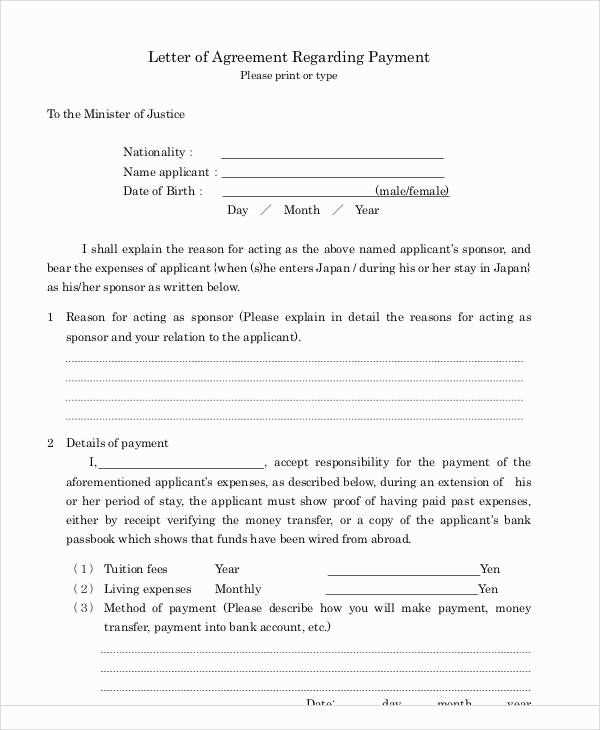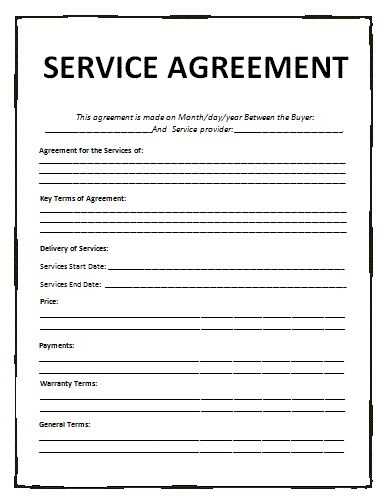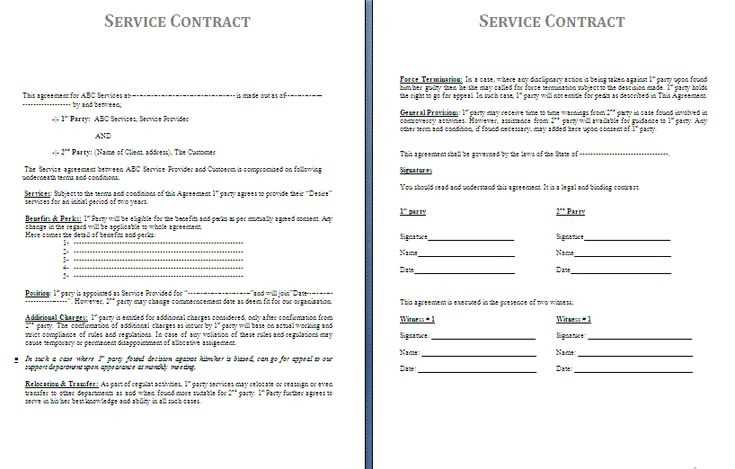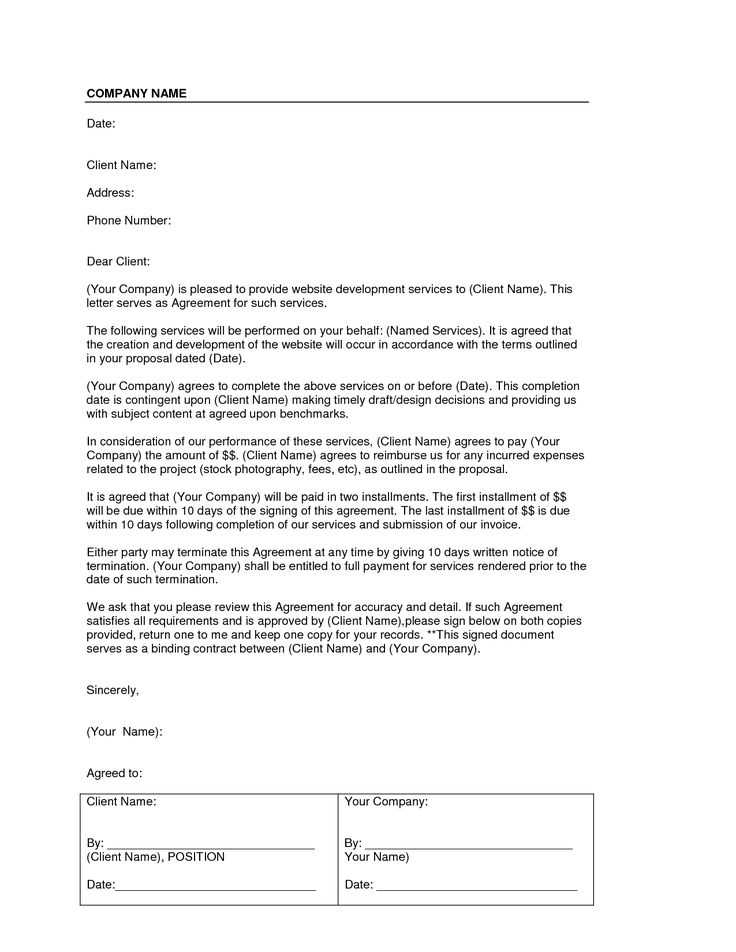Service Agreement Letter Template for Clear Contracts

When working with another party, having a clear written agreement ensures both sides are aligned on expectations, terms, and responsibilities. This type of document plays a crucial role in protecting both individuals and businesses, providing a structured framework for their collaboration. Crafting a well-defined contract helps avoid misunderstandings and ensures all legal obligations are met.
Why You Need a Well-Structured Document

A solid contract ensures that both parties have a clear understanding of their obligations and the terms they are bound to. Whether for a freelance project, consulting work, or any other professional arrangement, this document outlines expectations, deadlines, and payment terms. This clarity reduces the risk of disputes and provides a point of reference in case of misunderstandings.
Key Elements to Include

- Parties Involved: Clearly list all individuals or entities engaged in the agreement.
- Scope of Work: Define the services, tasks, or deliverables that need to be completed.
- Timeline: Outline start and end dates, along with key milestones.
- Compensation: Specify the payment structure, including amounts and due dates.
- Confidentiality and Non-Disclosure: If applicable, include terms about information sharing and confidentiality.
Steps to Draft the Perfect Document
Creating a formal agreement requires attention to detail and clarity. Follow these steps to ensure the contract is comprehensive and clear:
- Start with a Clear Title: Provide a title that reflects the nature of the arrangement.
- Detail the Terms: Write down each condition carefully to avoid ambiguity.
- Review and Edit: Go through the document to ensure it is accurate, covering all points necessary for the arrangement.
- Consult a Legal Expert: If necessary, seek legal advice to ensure compliance and correctness.
Common Mistakes to Avoid
- Being Too Vague: General terms can lead to confusion and disputes.
- Skipping Key Details: Missing out on essential elements such as timelines or compensation can cause future problems.
- Failing to Get Signatures: Ensure both parties sign the document to make it legally binding.
How to Use Pre-Made Documents
Using a pre-written contract can save time, but it’s important to customize it according to the specific details of your project. Modify the language to reflect the unique aspects of your arrangement. Ensure the pre-existing clauses suit your needs, or adjust them as necessary. Templates are useful tools but must be personalized for the best results.
Understanding Professional Contract Documents
Having a formal, written document that outlines the responsibilities, expectations, and terms between two or more parties is crucial for any business or personal collaboration. This structured agreement provides clarity on the scope of work, timeline, and other essential elements. It not only protects all parties involved but also serves as a reference in case of disputes or misunderstandings.
Why This Type of Document Matters
Creating a solid contract ensures that both parties are aligned on their roles, deliverables, and expectations. It prevents potential conflicts by providing clear instructions for the collaboration, including payment, deadlines, and any contingencies. A well-drafted document adds an extra layer of security, making the working relationship more efficient and professional.
Core Elements to Include
For a contract to be effective, it must cover several key elements:
- Parties Involved: List all parties entering into the arrangement.
- Scope of Work: Define the tasks or services to be provided.
- Timeline: Specify deadlines and milestones.
- Compensation: Clarify payment terms and amounts.
- Legal Terms: Address confidentiality, dispute resolution, and other legal matters if needed.
Common Pitfalls to Watch Out For

Even with a well-structured contract, mistakes can occur. Common issues include vague wording, missing details, or incorrect clauses that do not reflect the true intentions of the parties. It’s essential to review the document thoroughly to ensure that everything is clear and accurate.
For those who need to save time, using a pre-existing model can be helpful. However, it’s important to adapt the standard language to fit the specific needs of your arrangement. Templates should be adjusted to ensure that no important terms are overlooked and that all requirements are included appropriately.